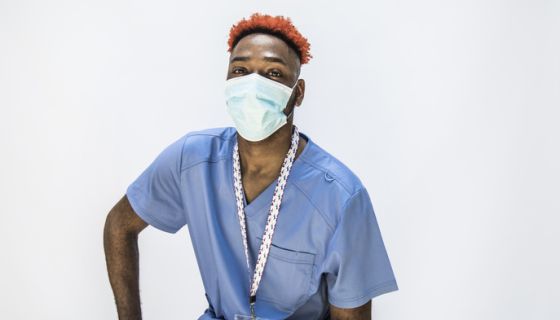
Source: MoMo Productions / Getty
Thanks to coronavirus, wearing a face mask while out and about is a non-negotiable. But, according to new studies, some of the face masks people are wearing are NOT very effective at preventing the spread of COVID-19.
“In experiments, bandanas, handkerchiefs, fleece balaclavas (cold-weather gear that covers the entire face except for the eyes) and neck gaiters (tubes of performance fabric typically used for running outdoors), offered very little protection, while N95 respirators, surgical masks and even homemade cloth masks performed better,” NBCLosAngeles writes.
ALSO: Tune In | Omarion’s “Can You Hear Me?” Video Honors Members Of The Dance Community
So, how exactly was each mask type tested? “For the experiments, researchers in the Duke Department of Physics positioned a laser beam in a dark box that would illuminate respiratory droplets as they pass through the light,” the site notes, adding “A speaker then positioned their mouth by a hole to the box and said a phrase while a camera (in this case, an iPhone camera) on the other end of the box captured video of the droplets in real-time. The researchers tested a total of 14 common face coverings, then analyzed the video frame by frame using a computer algorithm that counts the number of particles visible. Participants said the phrase ‘Stay healthy, people’ five times into the laser, a total of 10 times for each mask.”
According to the experiments, neck gaiters performed so poorly that they actually produced MORE particles than speaking with no face mask at all!
“We attribute this to … the textile breaking up those big particles into many little particles,” Dr. Martin Fischer explained. “They tend to hang around longer in the air, they can get carried away easier in the air, so this might actually be counterproductive to wear such a mask.”
ALSO: Living Legend Viola Davis Makes THIS Landmark Purchase As Friends & Peers Wish Her A Happy Birthday
As for what does work, an N95 mask with no valve was the most effective. “A disposable surgical mask made from a plastic-derived material called polypropylene (No. 1 in the photo) was the next best option, followed by a mask made from two layers of cotton and one layer of synthetic material (No. 5 in the photo),” the site goes on.
Click here for a reference photo of the aforementioned masks and stay safe!







